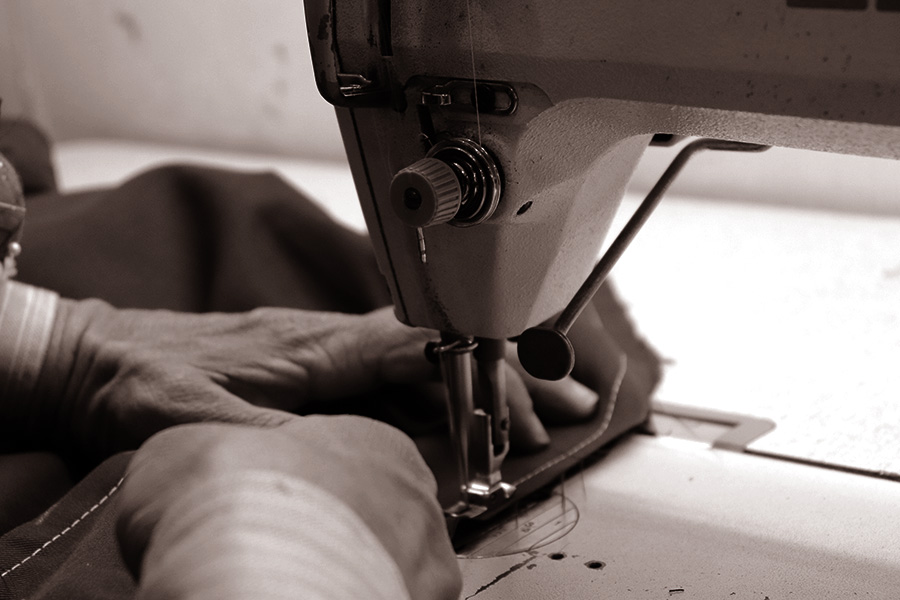Tailor Perth Professionals: Boost Your Style with Custom Tailoring
Comprehending the Tailoring Process: From Fabric Option to Last Suitable for the Suitable Wardrobe
The tailoring procedure is an intricate interaction of art and scientific research, beginning with the essential decision of textile option and finishing in the exact adjustments of final installations. Each material type brings unique top qualities that affect not only the visual charm however also the garment's longevity and viability for different occasions. Recognizing the subtleties of tailoring strategies can raise one's wardrobe to extraordinary levels of sophistication. As we discover these aspects further, one must take into consideration just how also the smallest details can significantly affect the total result of one's personal design.
Value of Material Option
Choosing the right textile is essential in the tailoring procedure, as it straight influences the convenience, longevity, and overall aesthetic of the last garment (tailor perth). The option of fabric establishes the foundation for the garment's performance, style, and performance. Various fabrics possess special properties, such as stretch, breathability, and weight, which can considerably impact just how the garment drapes and fits the body
Furthermore, material selection influences the garment's long life and simplicity of treatment. Premium materials can endure deterioration, maintaining their appearance and structure in time, while lower-quality products may bring about pilling or fading. In addition, the ideal fabric adds to the garment's ability to shift across celebrations and periods, thereby boosting versatility.
A tailored item made from a proper textile not only showcases workmanship however likewise elevates the wearer's confidence. Subsequently, comprehending the subtleties of material option is critical for any kind of tailoring undertaking. It guarantees that the end product not only fulfills the visual wishes of the client yet also aligns with useful needs, consequently attaining a harmonious equilibrium in between kind and function in the customized wardrobe.
Kinds of Fabrics and Their Uses
Recognizing the numerous kinds of fabrics offered is essential for making notified decisions during the customizing process. Each material has one-of-a-kind characteristics that dictate its viability for specific garments and events.
Cotton, recognized for its breathability and softness, is ideal for informal wear and summer season clothes. Its adaptability allows it to be customized right into whatever from t-shirts to gowns. Woollen, on the other hand, is favored for its heat and framework, making it a superb option for official fits and outerwear - tailor perth. Its natural elasticity aids garments keep shape with time.
Silk exudes high-end and is light-weight, making it perfect for eveningwear and delicate blouses; nevertheless, it needs mindful handling due to its fragility. Bed linen, with its textured finish, is a prominent selection for warm climates, giving a ventilated and crisp feel, however it wrinkles conveniently, which might affect the garment's look.
Synthetic textiles, such as polyester and nylon, deal toughness and resistance to wrinkles, making them suitable for day-to-day wear and energetic garments. Recognizing these fabric kinds and their homes permits better decision-making, ensuring that each tailored item not only fits well yet also straightens with the desired objective and event.
The Tailoring Strategies Discussed
The art of tailoring counts on a range of techniques that transform textile into well-fitted garments. Central to this procedure is pattern drafting, where a tailor creates themes based upon the customer's measurements and preferred style. This initial step makes certain that the garment will fit the wearer properly prior to any type of reducing happens.
When patterns are developed, reducing strategies enter play. Precision is paramount as mistakes can cause misfitting garments. Tailors often utilize different cutting approaches, such Full Article as single-layer reducing for detailed layouts and multiple-layer reducing for effectiveness on basic patterns.
Basting is another crucial strategy, enabling tailors to temporarily sew material assemble for an initial installation. This approach supplies the possibility to evaluate the drape and total silhouette before last stitching.
Seaming strategies, consisting of flat-felled seams and French joints, boost the garment's longevity and aesthetic charm. Tailors also employ strategies such as interfacing and extra padding to give framework and form to certain areas, like collars and shoulders.
Lastly, finishing my company strategies, consisting of hemming and edge completing, guarantee the garment's longevity while offering a sleek look. Together, these methods develop the foundation of reliable customizing, leading to elegant, custom-fit garments.
Suitable Adjustments and Factors To Consider

Key considerations include the shoulder fit, which must neither sag nor limit movement, and the sleeve length, which should enable comfy arm movement while maintaining a polished appearance. Additionally, modifications at the midsection can refine the shape, with choices to let out or absorb fabric as needed.
The surge of trousers is one more critical aspect; it should rest easily over the hips without causing discomfort, enabling ease of motion. Hemming sizes for both trousers and skirts ought to show the user's preferred design while respecting original site proportions.

Preserving Your Tailored Clothes
Constantly follow the treatment tag instructions, which may suggest completely dry cleaning for fragile textiles or device washing for even more durable products. Prevent regular laundering, as this can wear down the fabric and alter the garment's form.
Storage is just as important; use padded wall mounts for jackets and layers to preserve shoulder framework, and shop pants folded nicely or hung to prevent creasing. Secure garments from straight sunlight, which can fade colors and damages fibers.
In addition, regular inspections for small repair work can prevent larger problems. Inspect for loosened switches, fraying seams, or indicators of moth damages, attending to these problems quickly to keep the garment's honesty.
Lastly, think about seasonal turning. Putting on customized pieces in moderation allows textiles to recoup, extending their life expectancy. By carrying out these upkeep techniques, you can ensure that your customized garments remain as immaculate as the day you first wore them, improving your perfect closet for several years to find.
Final Thought
The customizing process, incorporating material option, competent techniques, and precise suitable modifications, plays an essential function in producing garments that boost both convenience and style. Each phase adds to the overall effectiveness of the end product, making certain that garments not just fits well but additionally shows individual identification. Recognizing the importance of maintenance expands the life of customized garments, solidifying their value in a well-curated wardrobe. A comprehensive method to customizing culminates in a certain and sleek appearance.
Picking the ideal material is critical in the tailoring procedure, as it straight influences the comfort, sturdiness, and general aesthetic of the final garment. The option of textile establishes the foundation for the garment's efficiency, style, and functionality. Different fabrics have distinct buildings, such as breathability, weight, and stretch, which can dramatically impact how the garment drapes and fits the body.
The art of customizing depends on a variety of strategies that change textile into well-fitted garments.The customizing process, incorporating material option, knowledgeable methods, and specific fitting changes, plays a vital role in producing garments that enhance both comfort and design.